This is a picture essay of a road trip I organized with friends to the furthest east point of Thailand. We went in search of open country, Isaan food and things being made.
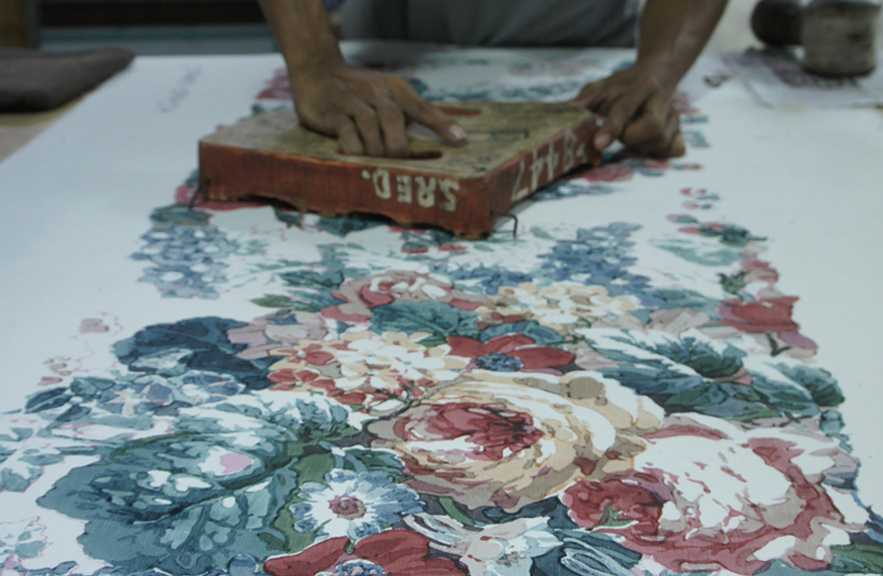
English printing company Turnbull Designs had invited us to see their traditional block-printing workshop. They had moved the entire factory from northern England to Khorat.
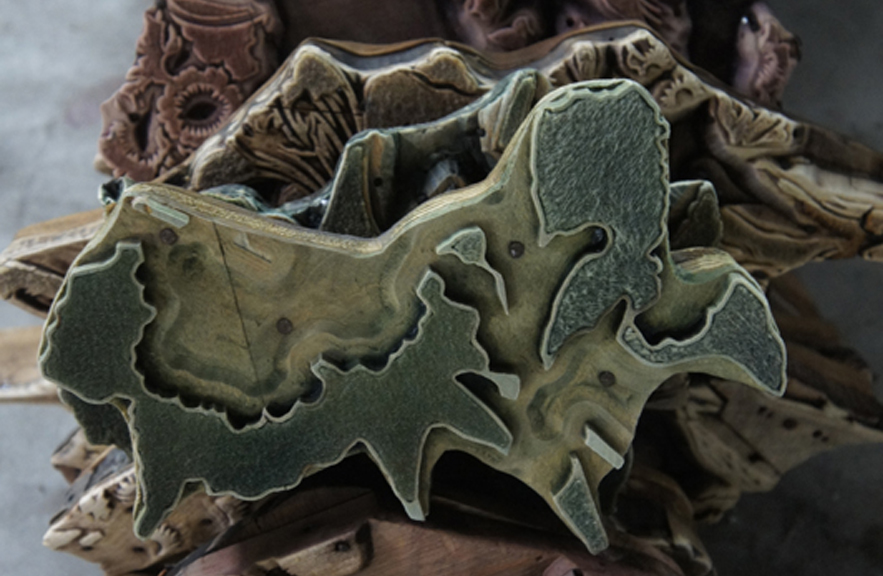
Some of the wooden blocks were over 100 years old but still working and preserving their archive.
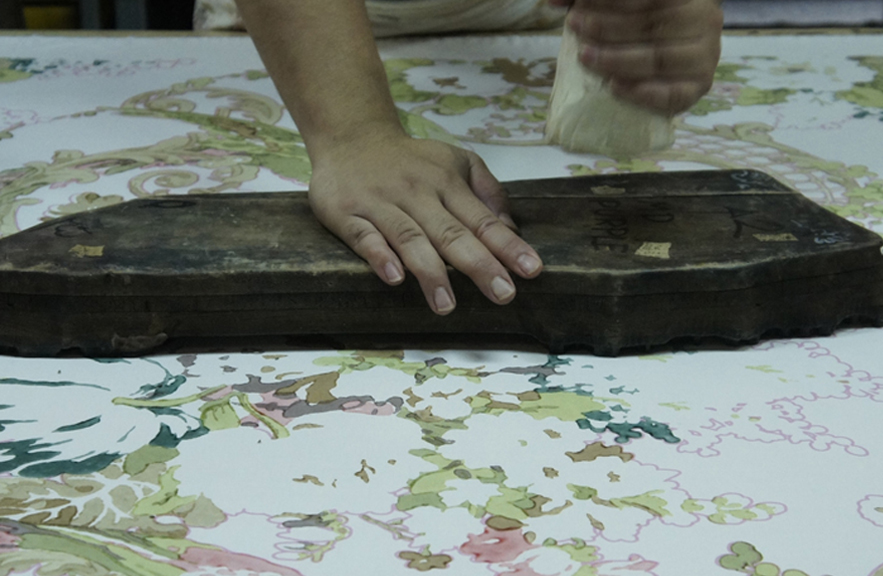
The block is placed and then hammered.
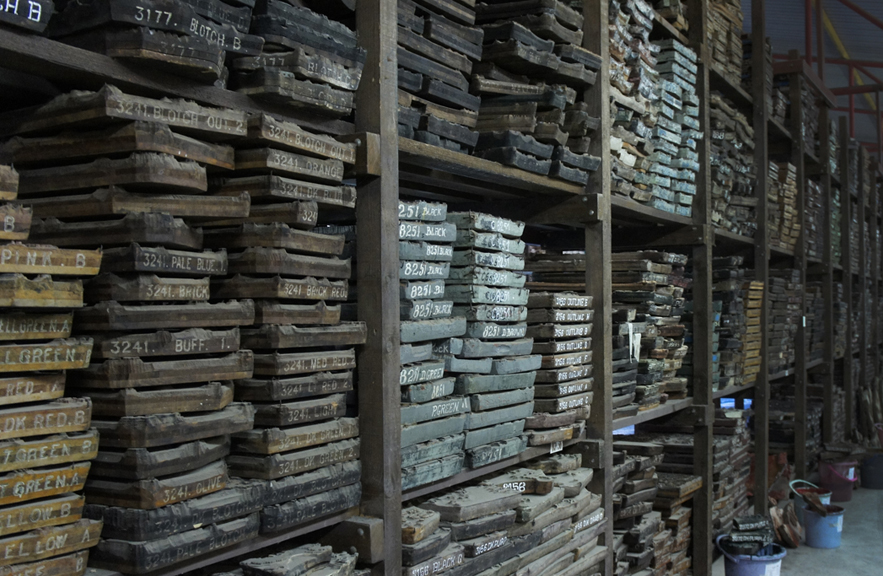
Blocks organized according to their patterns.
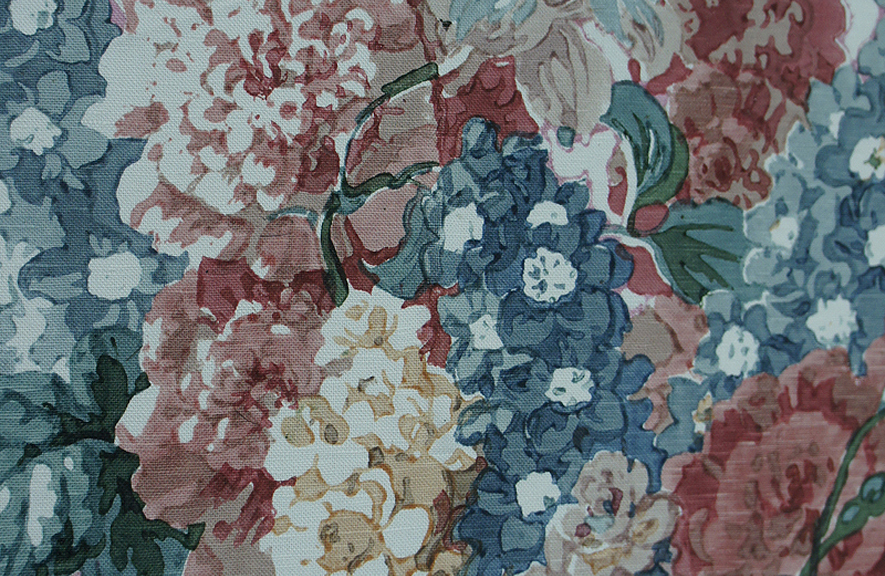
This traditional English floral design on linen shows the unique watery aspect that is achieved only through hand printing.
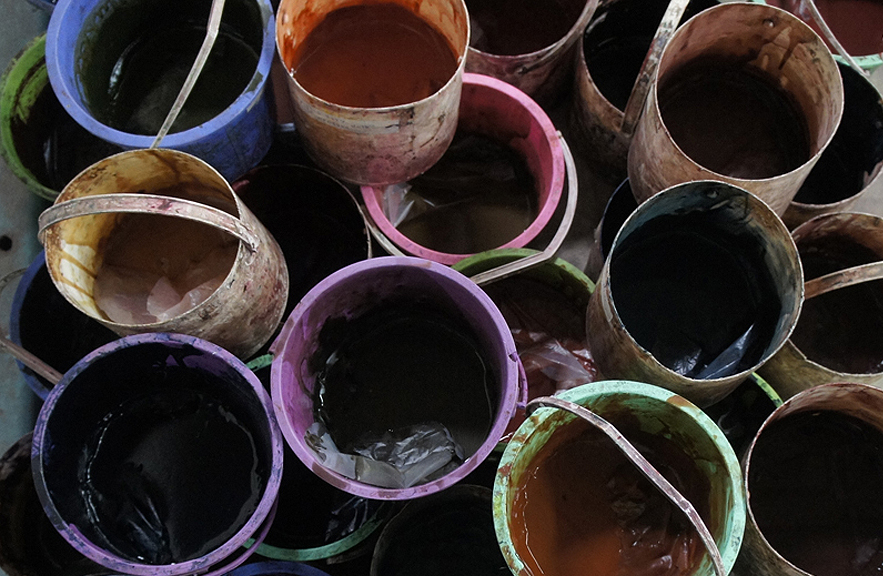
Dyes stacked up.
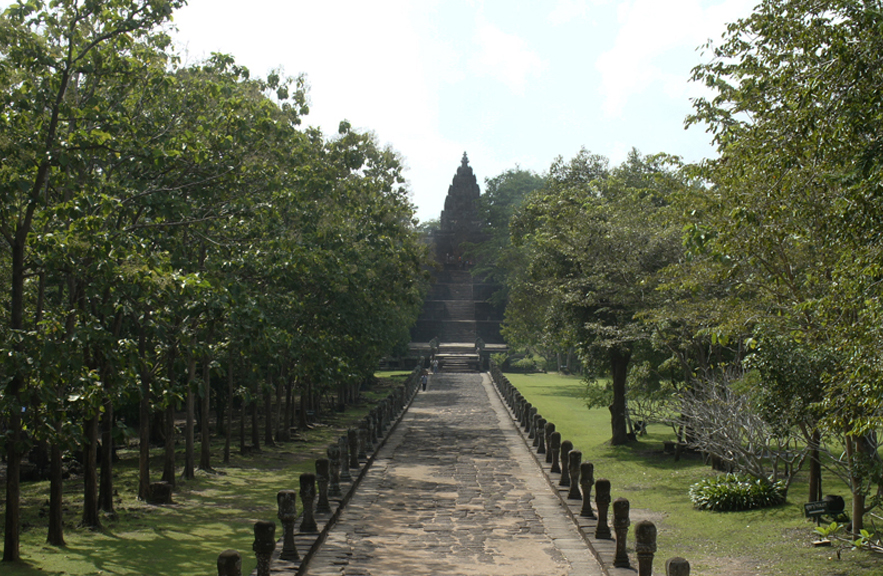
Phanom Rung Temple
After Khorat we drove to Buriram Province and the Phanom Rung Temple - Thailand's most famous Khmer temple. This wonderfully preserved structure is located upon an extinct volcano and rises above the surrounding plains impressively. Unlike the temples of Cambodia, Phanom Rung has relatively few tourists so you can enjoy the environment much more.
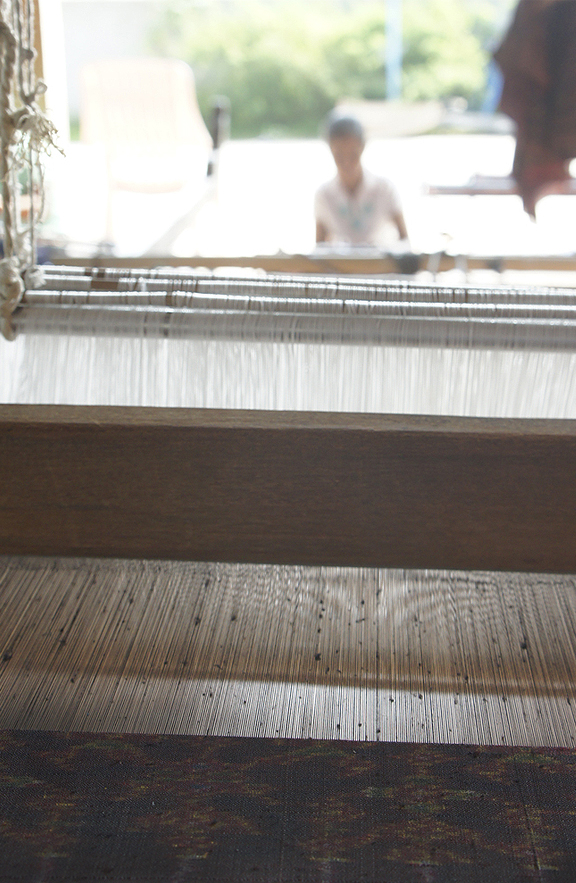
From Buriram we drove east to Surin province which also borders Cambodia. It is famous for the 'Elephant Roundup' festival but I was most interested in meeting Khun Daeng, a National Treasure silk ikat master whose works are collected and worn by many of Thailand's sophisticated ladies. He makes silk using purely natural dyes and is able to reproduce some of the most famous and intricate ikat patterns ever made in Thailand.
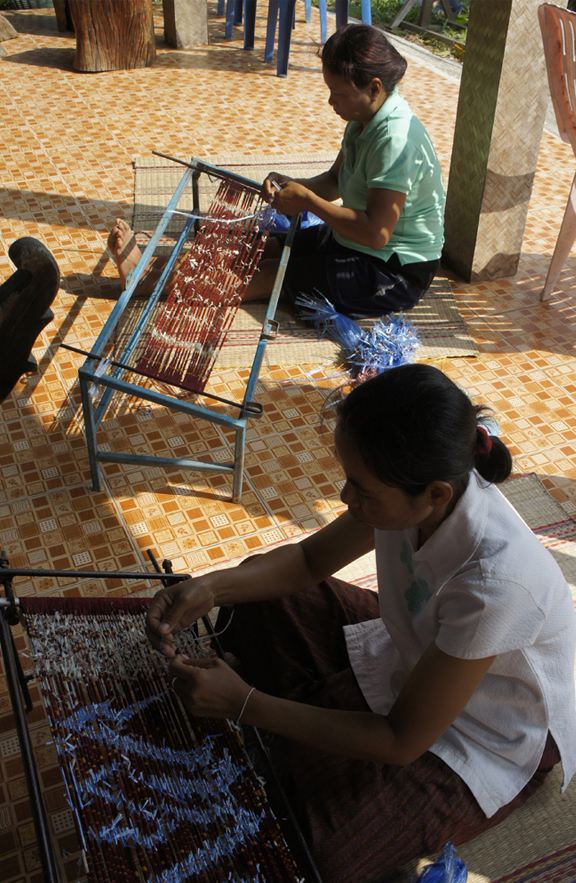
Knotting the silk yarn to resist dyes.
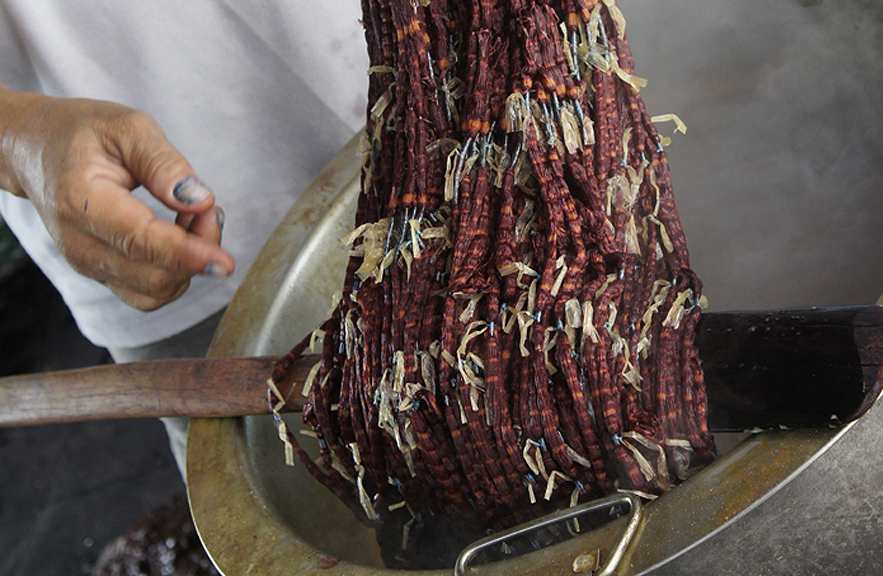
The knots prevent the dye reaching those areas - which gradually builds up the pattern.
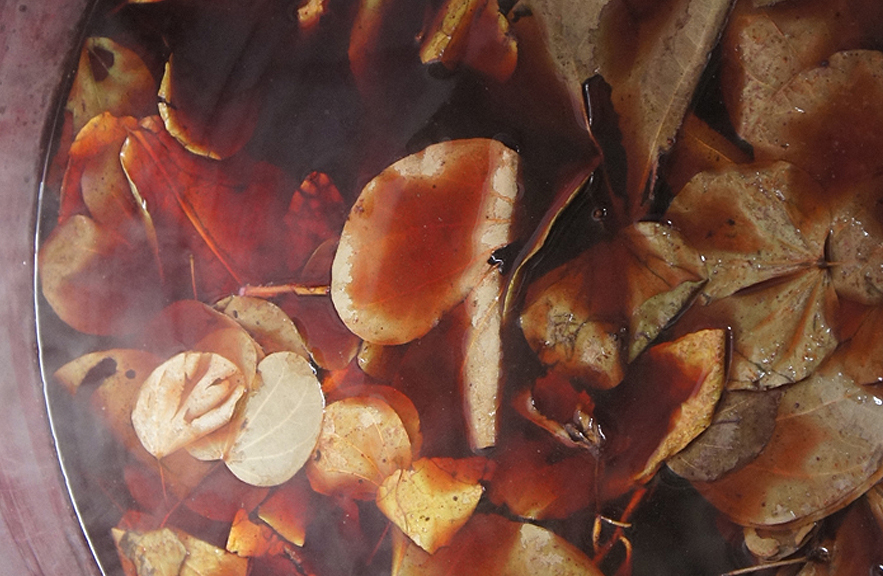
Dyeing red using flowers and leaves.
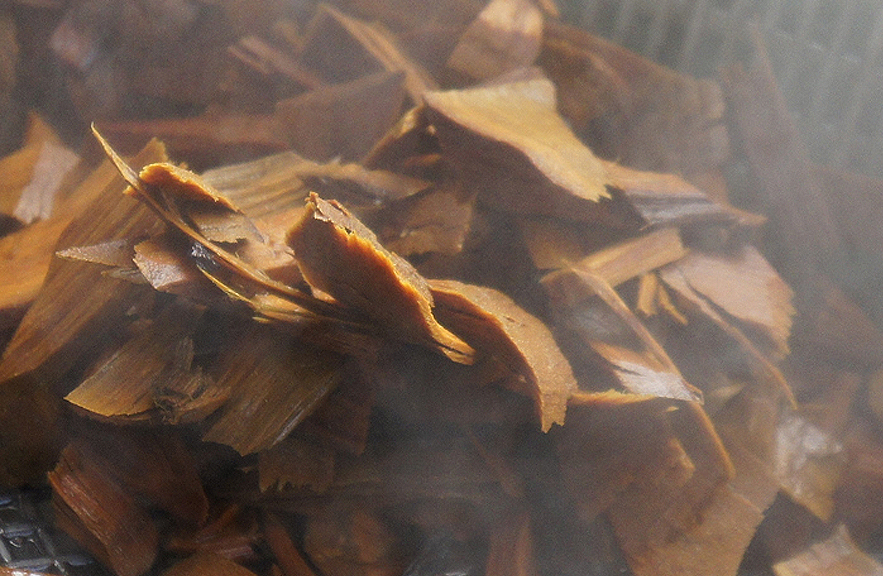
Thailand's famous saffron colour worn by the nation's monks is achieved by boiling the wood of the Jackfruit tree. We use the famous fruit of this tree to make our Pointillist Vessels.
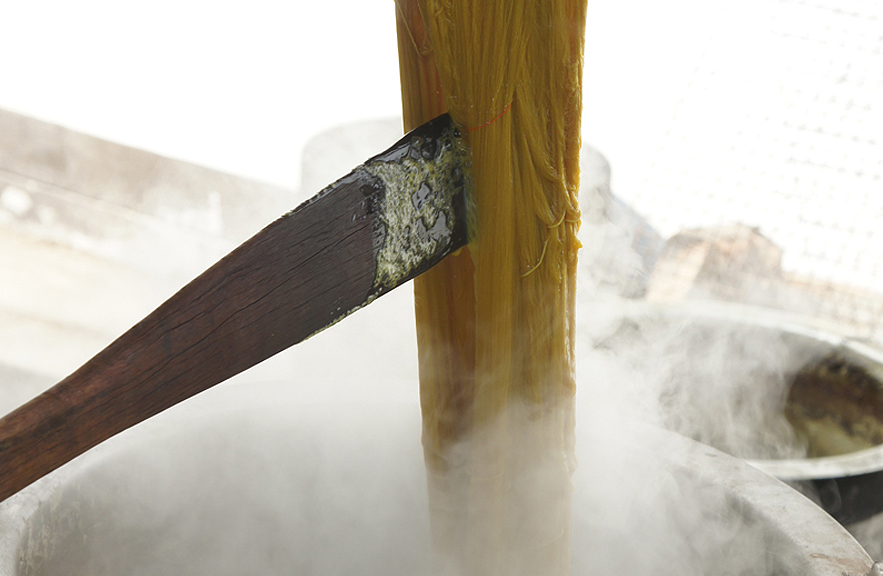
Saffron dyed silk yarn.
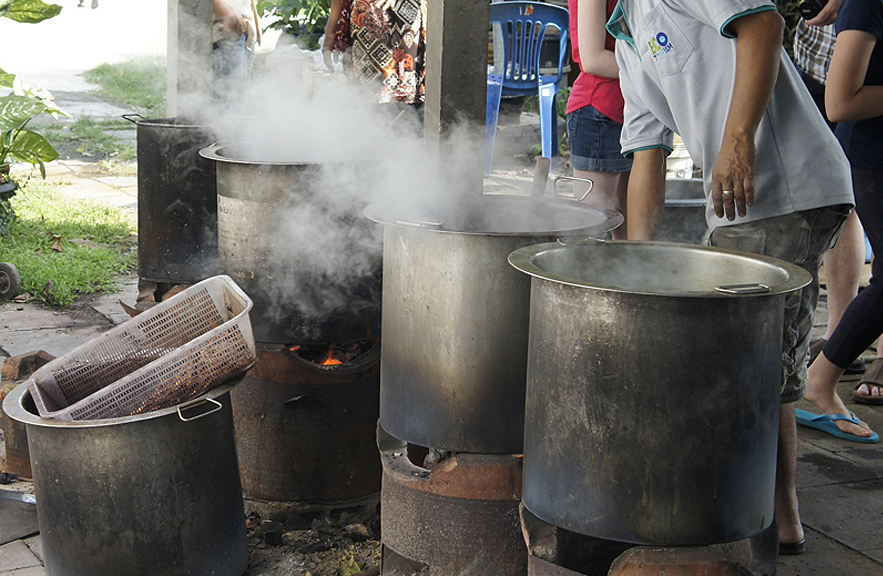
Boiling vats of dyes.

Yarn after dyeing.
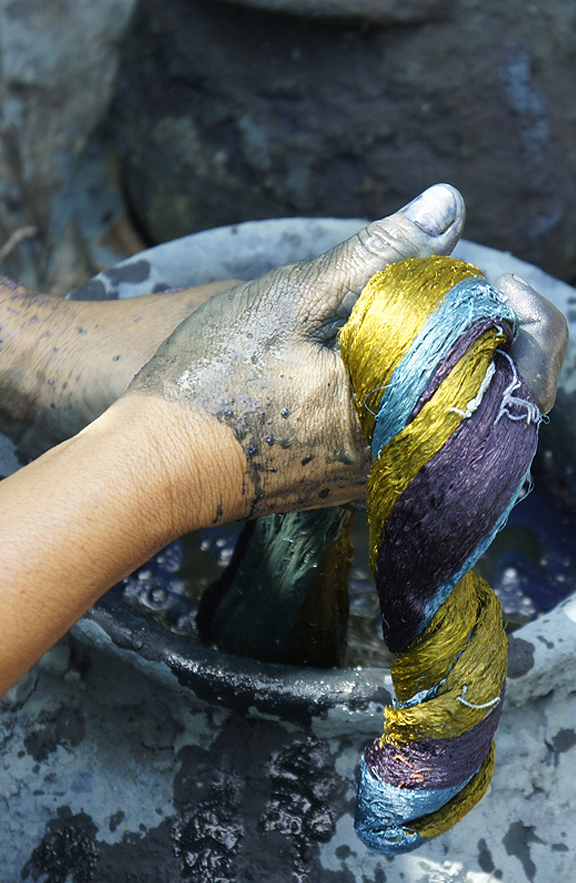
The same three colours dyed in natural indigo - one dip only. Indigo turns blue through an oxidization process that is difficult to control and as such it is seen as the most difficult and 'magical' colour in many cultures.
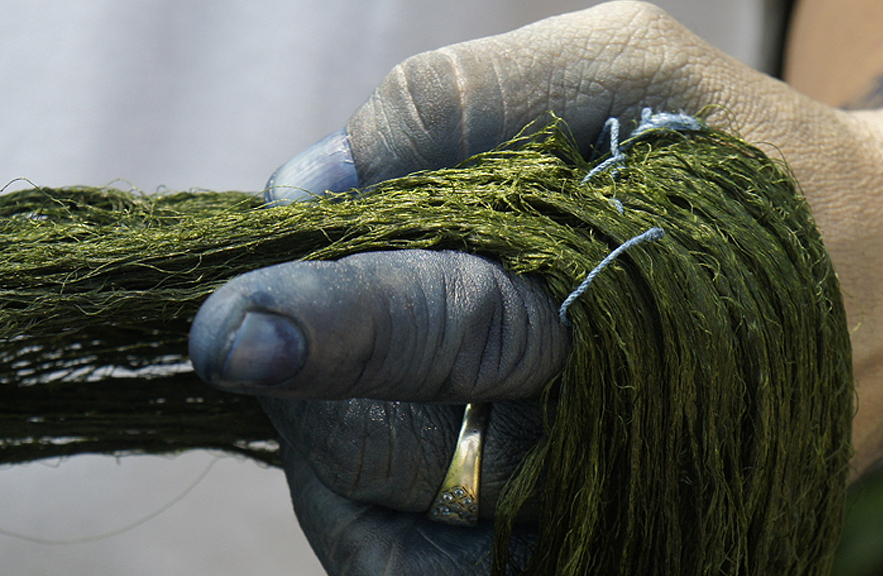
Yellow silk yarn after a dip in indigo dye = green.
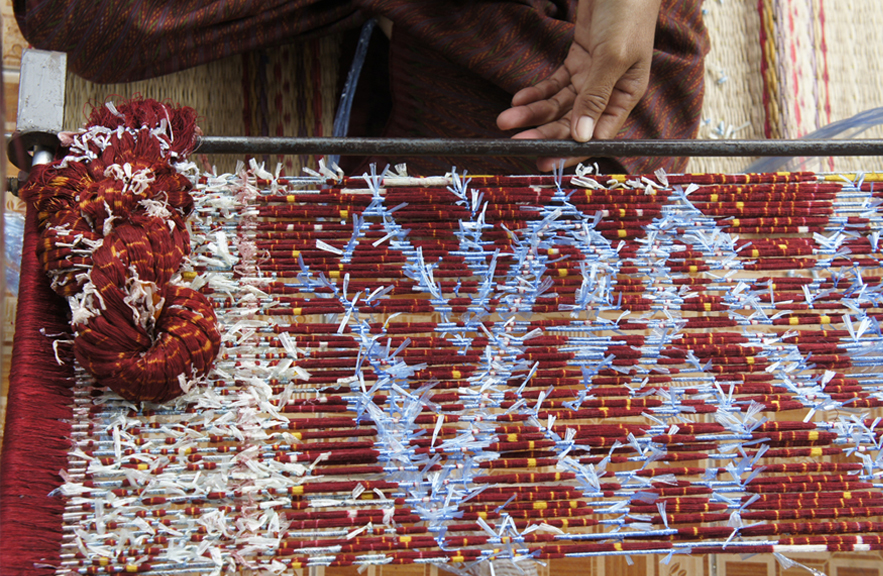
The yarn is kept stretched so that the ikat pattern can be built up using the knots.
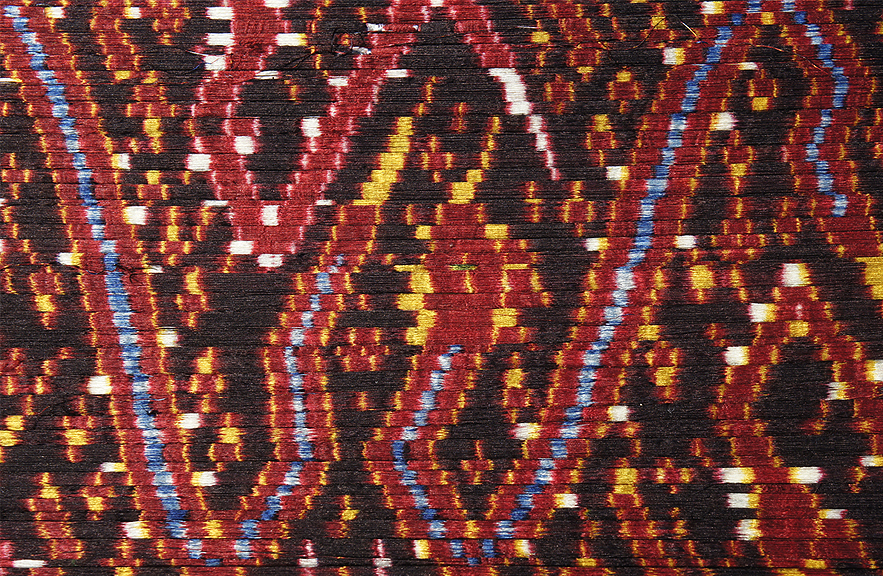
The finished ikat dyed warp yarns awaiting weaving with a weft.
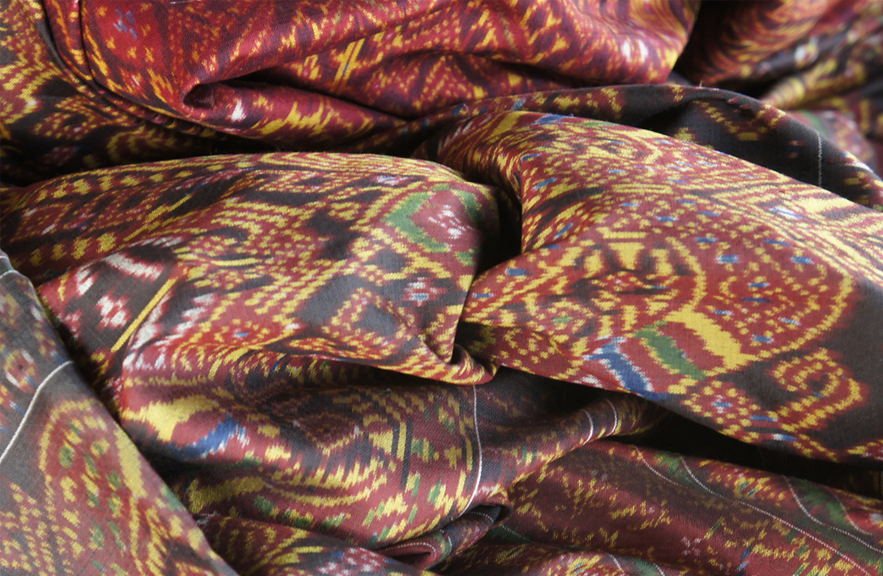
Finished silk ikat with traditional Thai patterns. The weight, stiffness and handle of this Thai silk is unique and one of the most luxurious textures in the world.
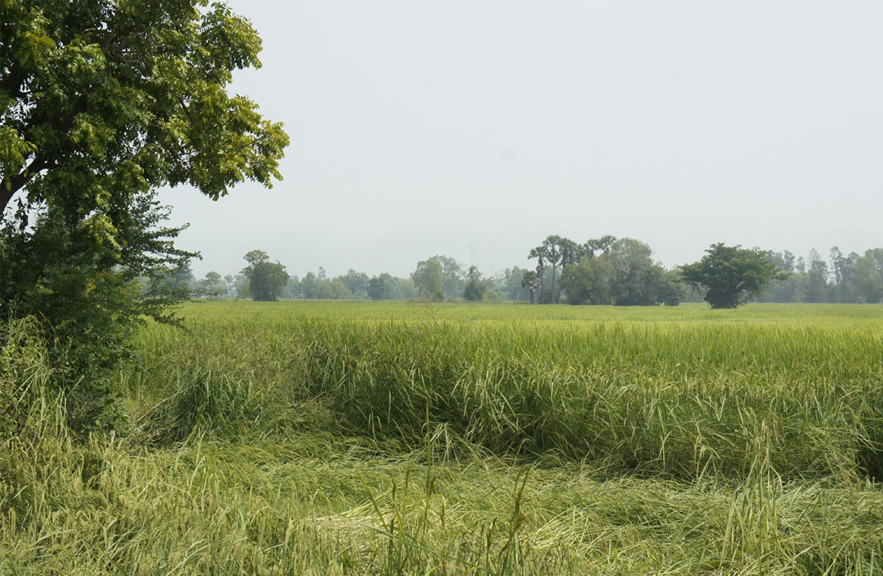
The view from the silk weavers workshop - open fields looking towards Cambodia.

Mekong River in Ubon Ratchathani Province
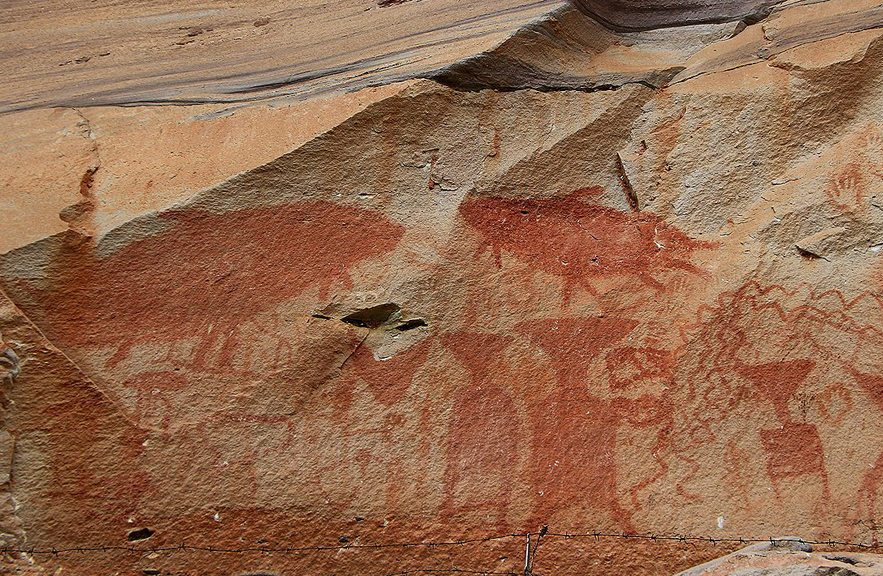
Pha Taem pre-historic cave drawings
Our final stop was the Mekong in Ubon Ratchathani Province, with the mountains of Laos over the river. We stayed at the small resort Tohsang Khongjiam and visited Thailand's best known pre-historic site nearby - Pha Taem National Park. This proved to be much more beautiful than I had expected - a cliff above the Mekong with paintings of fishing and elephant hunts painted 3 - 4,000 years ago. It was difficult to photograph but there was a wonderful serenity and atmosphere to the place.
Thailand is as big as France in area, over 1,000 kilometres from north to south and with over 3,000 kilometres of coastline. The border with Laos follows the Mekong for much of its way. Driving from Bangkok in any direction will result in the discovery of beautiful landscapes, wonderful traditions, crafts and incredible food.

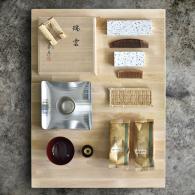
Add new comment